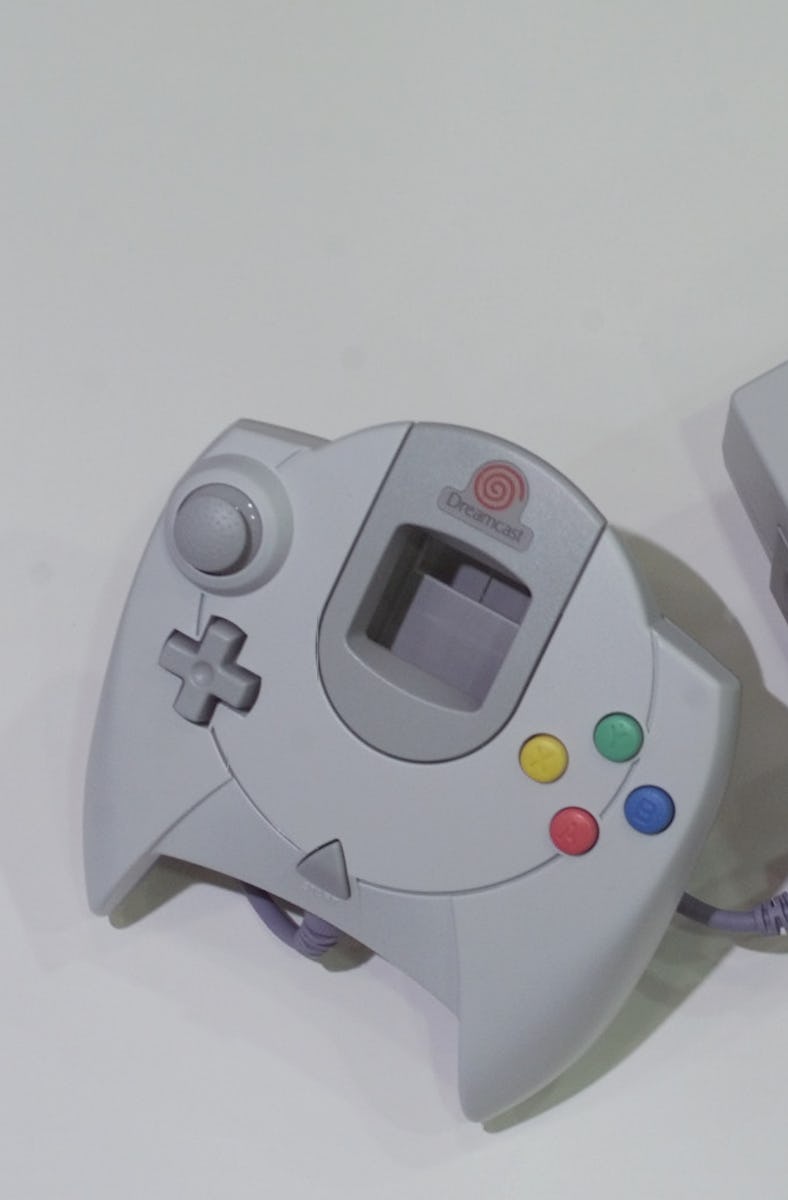Gaming’s Most Famous Failure Proves Luck Is OP
Sega’s most powerful and innovative console was also its last. So what went wrong?

Thomas Edison famously said he never failed, only that he found “10,000 ways that don’t work.” Edison may have been wrong about other things, like electrocuting elephants or committing patent theft through thuggery, but he was right about failure. It’s about learning what isn’t working, about finding a way to go for that 10,001st try. And when it comes to gaming, nothing is more famously failed than the ill-fated Sega Dreamcast. Released 25 years ago on 9/9/99, Sega’s most powerful and innovative console was also its last.
The Dreamcast was built on failure. After going head-to-head with Nintendo in the early ‘90s thanks to the Genesis, Sega launched three console duds in a row. The 32X and Sega CD were peripherals attached to the Genesis, neither of which had the developer support or install base to survive. When Sega finally did launch a new standalone console, 1995’s Sega Saturn, it was quickly eclipsed by Sony’s PlayStation and the Nintendo 64.
Sega also alienated a ton of developers when it launched the Saturn ahead of schedule to beat the PlayStation to market, thus cheating the devs out of launch title sales and prestige. Like an elephant before its electrocution, those companies wouldn’t forget, and Sega had to rely on a handful of IP, like 2K Sports, for its launch library.
The Dreamcast was capable of mind-blowing visuals thanks to its impressive hardware. It had a 128-bit CPU (that’s double the Nintendo 64) and a modular architecture that allowed for peripherals like a fishing rod (!) and the coolest memory cards ever created. The VMU (visual memory unit) was a creative spin on traditional memory cards with its own handheld screen that could display game data when docked in the controller or used for minigames on its own. It even had buttons.
The Dreamcast was also the first console to include a built-in modem, positioning it as the original online gaming console. Long before the Xbox Live era, Dreamcast players could compete in games like Phantasy Star Online, Quake III Arena, and Unreal Tournament, which offered a glimpse of the online multiplayer experience that would later define gaming. Just not for Sega.
The lack of third-party support didn’t hurt the launch lineup, now considered also one of the best of all time, thanks to first-party titles like Sonic Adventure, Soulcalibur, and Power Stone. These games displayed the Dreamcast’s impressive graphical capabilities, particularly Soulcalibur, which looked better on Dreamcast than it did in the arcades.
It would later be home to the massively ambitious $50 million Shenmue from Yu Suzuki, the title that laid the groundwork for the open-world sandbox games that dominated bestseller lists for the next two decades. There would be no Grand Theft Auto V without the Dreamcast.
Shenmue crawled so GTA could run (all the way to the bank).
On paper, the Dreamcast seemed to be headed towards success. The North American launch saw unprecedented pre-order numbers, and Sega reported that the console sold over 500,000 units within its first two weeks in the US. Reviewers hailed its combination of graphical power, innovative features, and diverse game library. Publications like GameSpot and IGN declared it the best console Sega had ever produced, with many praising its cutting-edge hardware and smooth online integration.
Sales were less impressive in Japan. The Dreamcast faced fierce competition from Sony’s PlayStation, which had dominated the previous generation and continued to receive significant developer support. And the Dreamcast’s head start in North America was soon undercut by the announcement of Sony's PlayStation 2.
The mere promise of its backwards compatibility with PS1 games, broad developer support, and a built-in DVD player made many gamers willing to wait. Sega needed to sprint with its head start but stumbled along instead. A supply chain issue caused Sega to miss out on hundreds of thousands of potential console sales. Players also figured out a hack that allowed them to use CD-ROM drives to burn copies of Dreamcast games on their PCs. Piracy exploded, siphoning away even more revenue during the limited window Sega had to cash in before the PlayStation 2 arrived.
The Dreamcast’s final blow came from Sega itself. The company’s financial situation had deteriorated after years of declining sales and poor business decisions, leaving it unable to continue supporting the Dreamcast. Despite reducing the price of the console and releasing critically acclaimed games like Shenmue and Jet Set Radio, Sega couldn’t turn things around. In early 2001, less than two years after the Dreamcast’s release in North America, Sega officially discontinued the console and announced its exit from the hardware business to focus on software development.
Though the Dreamcast was commercially short-lived, its legacy endures. Many of its most iconic titles have remained beloved by fans and have seen re-releases on newer platforms. The Dreamcast is also remembered as a console that was ahead of its time, even if the world wasn’t ready for it. The online infrastructure it introduced would eventually become a standard in the industry, with Xbox Live and PlayStation Network picking up where Sega left off.
So what did Sega learn from its failure? Bluntly, it learned how to survive. Sega may not be near the heights it once held but if you’ve ever picked up a Yakuza game or reconnected with the Sonic franchise you know it’s still going strong. It’s working with its longtime rivals instead of against them, which just means more good games for everyone. It made over a quarter billion dollars in profit in 2023, so we’re not talking about just nostalgia. If failure is 10,000 ways that don’t work, then Sega found itself with #10,001.